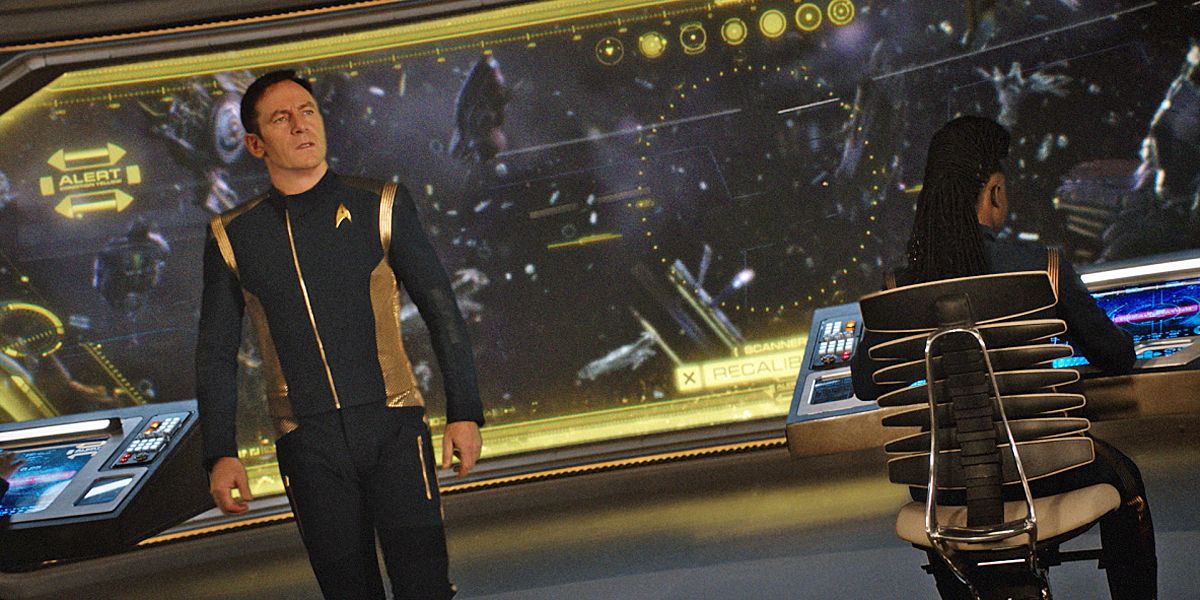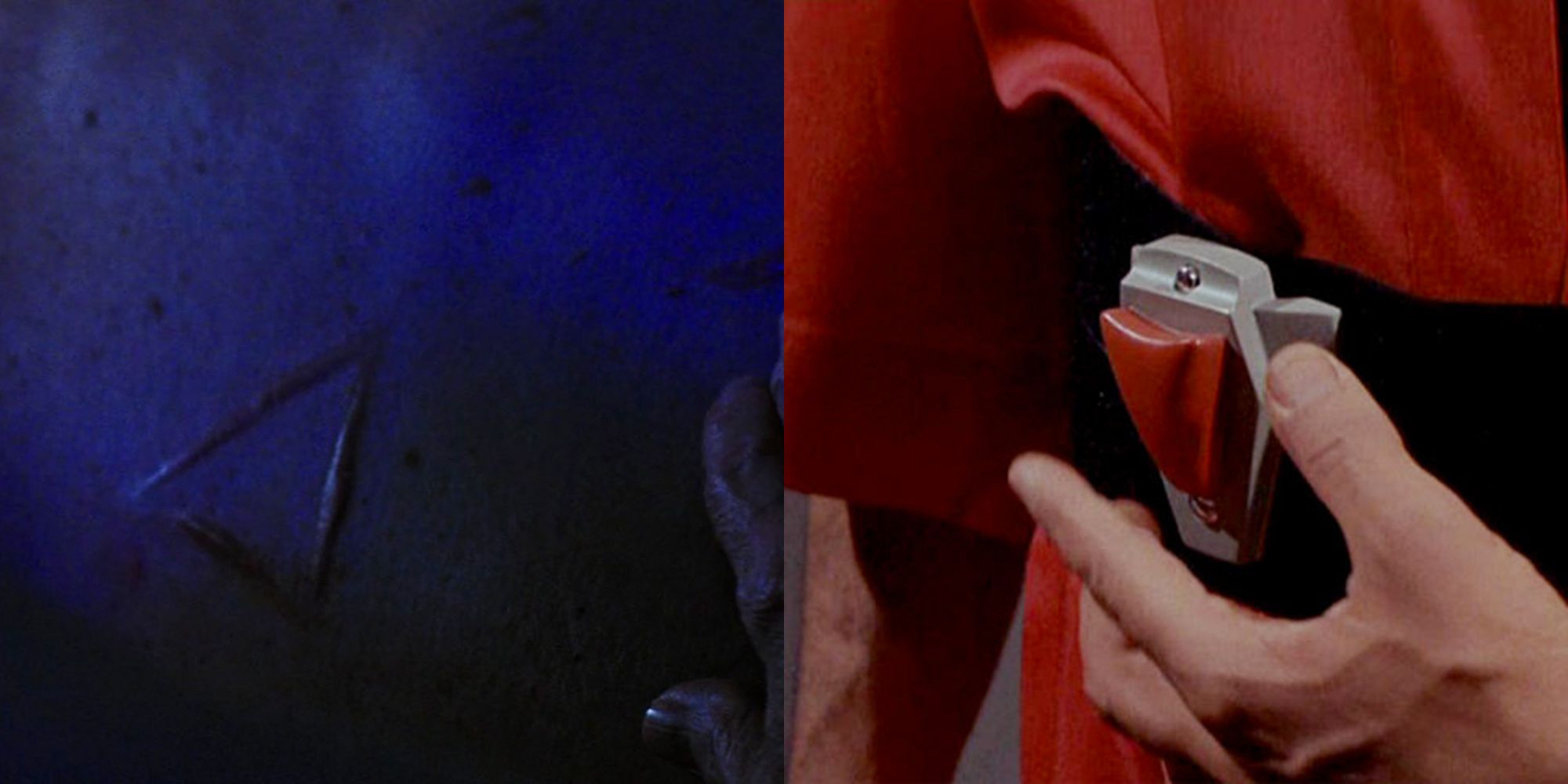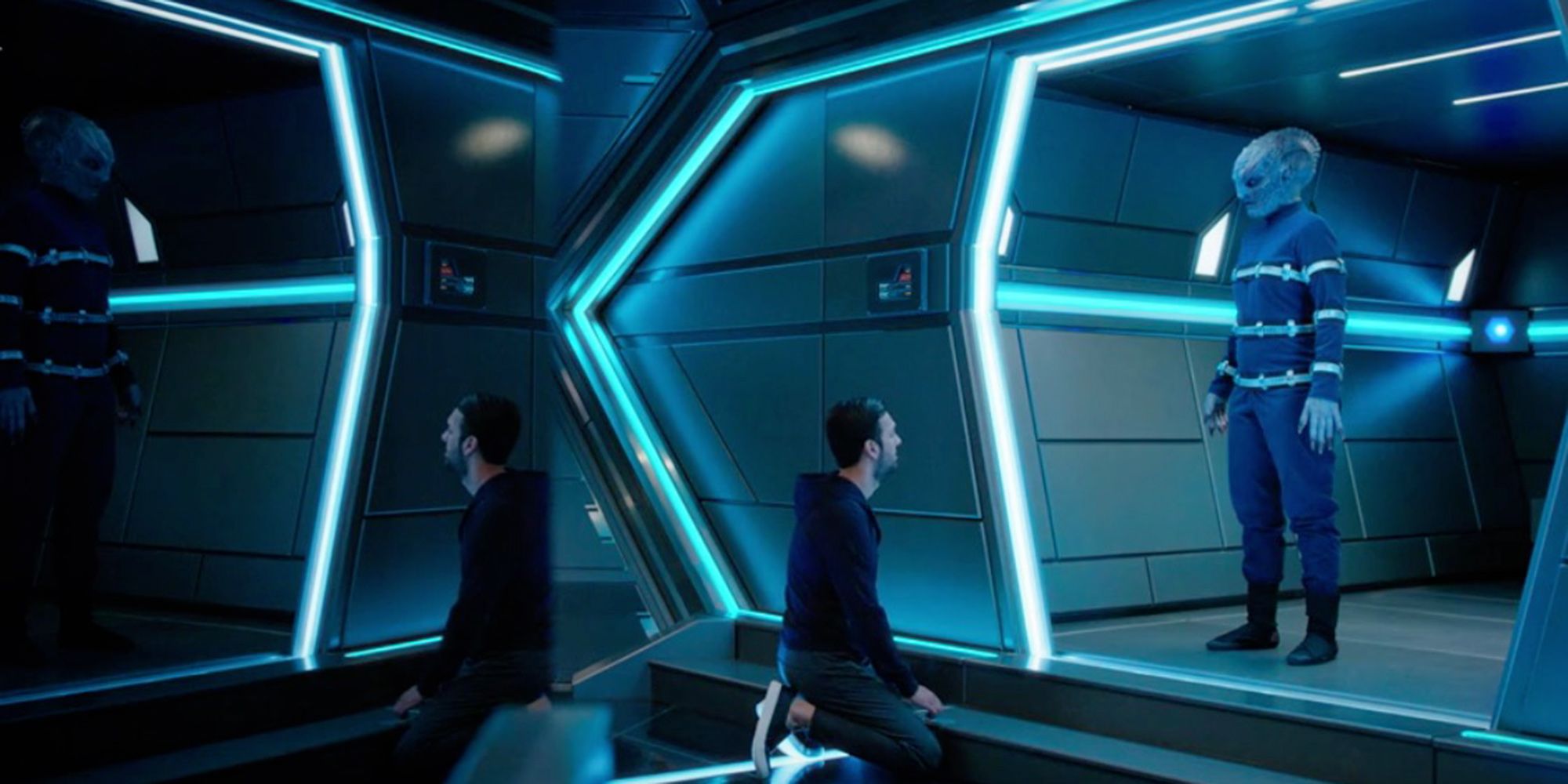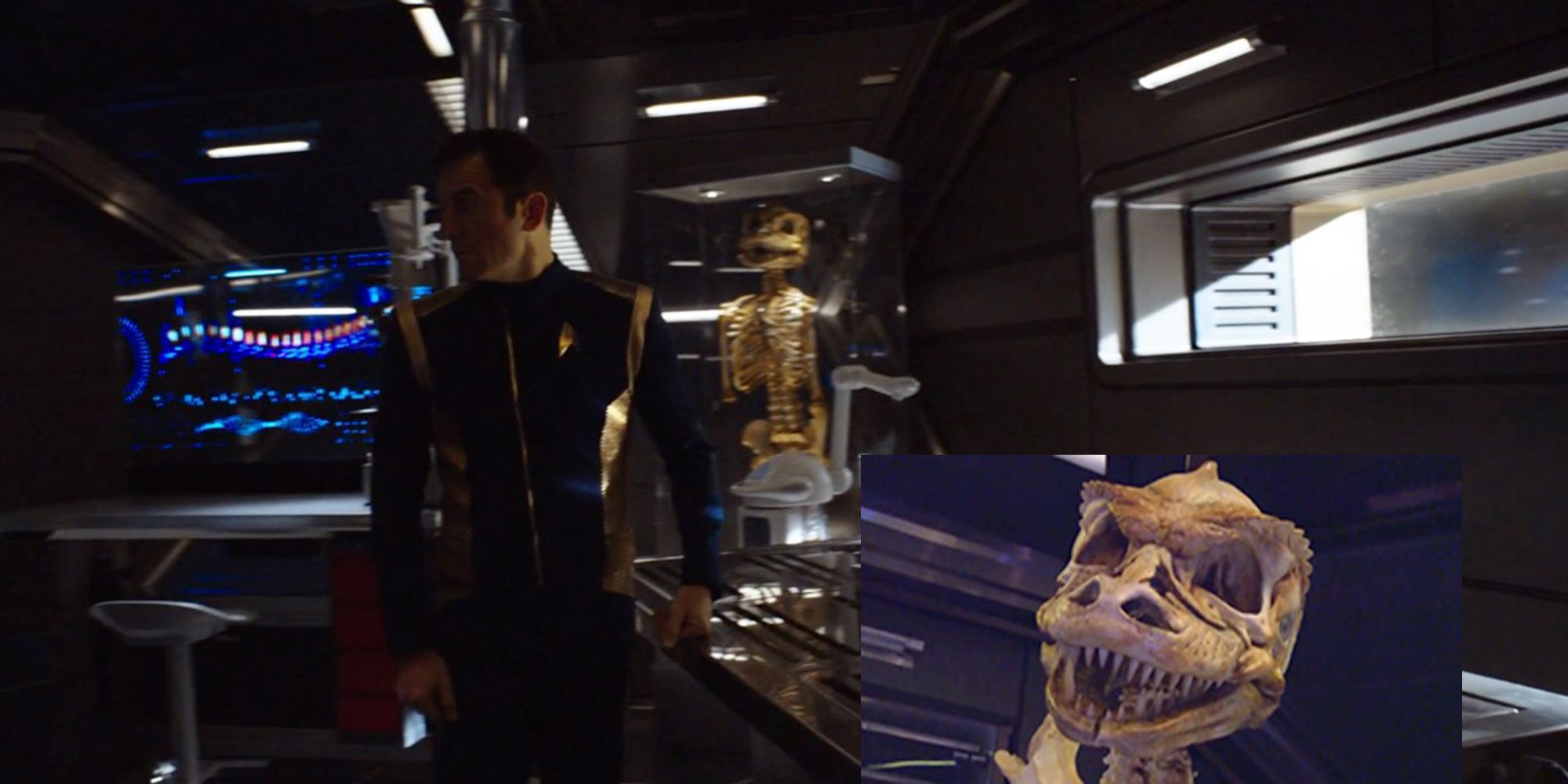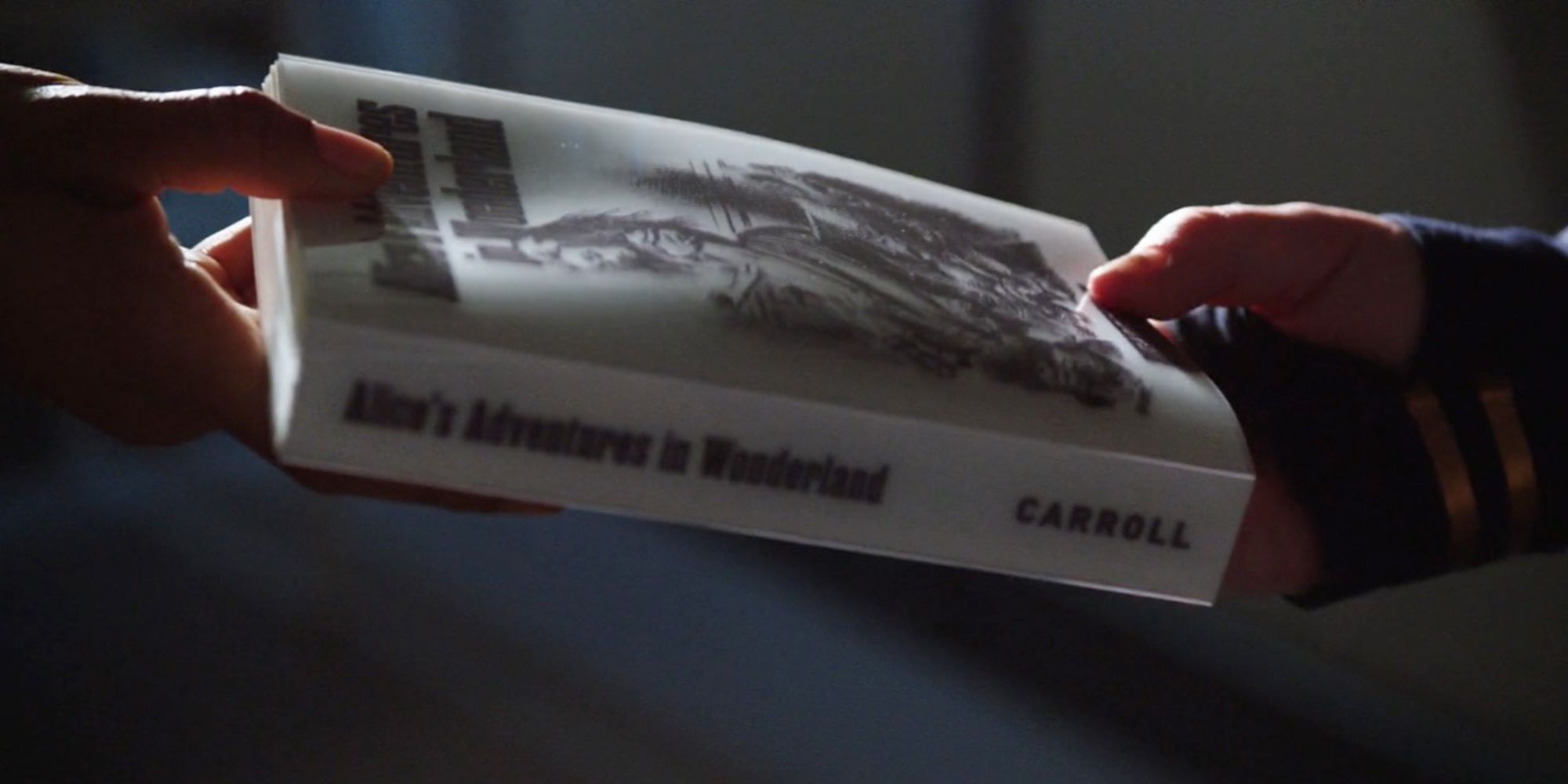WARNING: The following article contains spoilers for the midseason premiere of Star Trek: Discovery, "Despite Yourself," which debuted Sunday on CBS All Access.
Star Trek: Discovery's midseason premiere, "Despite Yourself," confirmed tonight that the Starfleet vessel did indeed wind up very far from home when it made that final jump in November's winter finale. Instead of completing the relatively small jump back to Starbase 46, after Captain Lorca entered in new coordinates at the last second, the ship wound up in an entirely different universe. The Mirror Universe, to be exact.
RELATED: Star Trek: Discovery May Have Opened the Door to the Mirror Universe
Introduced in the Original Series episode "Mirror, Mirror," the Mirror Universe is an alternate reality in which humanity exists as a race of bloodthirsty conquerors who believe in racial purity and the overall superiority of the human race. It's basically an entire universe made up of everyone's evil twins, and fans have been relentlessly theorizing if and how it would manifest on Discovery, as rumors persisted it might.
While the showrunners remained understandably mum on that topic, they teased the journey with a trail of breadcrumbs that begins as early as Episode 3. Discovery has earned a reputation for deep-cut references to Star Trek's extensive canon, and that's evident in the subtle clues sprinkled throughout the first half of the season hinting that a visit to the Mirror Universe was on the horizon, and that the visit was going to be orchestrated by the ship's captain.
Lorca's Scar
In Episode 6, "Lethe," Captain Lorca (Jason Isaacs) reunites with his erstwhile lover, Admiral Cornwell (Jayne Brook). When she begins to imply he's not mentally fit to return to duty after having been imprisoned by the Klingons in "Choose Your Pain," he cleverly sleeps with her in an effort to distract her from psychoanalysis. Afterward, as they lie in bed, she notices a mysterious triangle-shaped scar on his back, and when she touches it, he jolts awake and attacks her.
The shape of the scar is significant because it looks remarkably like one that might be left by a personal agonizer, a Mirror Universe device that inflicts intense pain when applied to a subject. They were portable versions of Agony Booths, torture chambers big enough to house an enemy alien or a wayward crew member; the Imperial Starfleet isn't a fan of sparing the rod. It could certainly explain why Lorca had such an extreme reaction to her barely touching that spot on his back.
Page 2: [valnet-url-page page=2 paginated=0 text='Through%20a%20Glass%2C%20Darkly']
Mirror Imagery
Discovery has depicted several prominent moments that feature mirrors or mirror images. The most memorable was the reflection of Paul Stamets (Anthony Rapp) remaining in his bathroom mirror after he walks away at the end of "Choose Your Pain." His reflection lingers, smiles furtively and then turns away. It's a disturbing moment that seems more at home in a Blumhouse movie than an episode of Star Trek, and it's hard to deny the significance of a nefarious-looking mirror image peering in on Stamets and Culber's happy home.
RELATED: This Star Trek: Discovery Fan Theory Is Crazy Enough to Be True
Aside from that, Lorca's introduction begins as a wide shot of open space, and then, as the camera pans out, it's revealed to be a reflection in Lorca's damaged eyes. Later, when Michael Burnham (Sonequa Martin-Green) tries on her new uniform before she officially starts as a member of Discovery's crew, we hold on a closeup of her in the outfit until Tilly (Mary Wiseman) walks in, and it's revealed to be a holographic mirror image we've been looking at the whole time. Finally, in the last moments of Episode 9, "Into The Forest I Go," Ash Tyler (Shazad Latif) confronts the captive Klingon L'Rell (Mary Chieffo) in the brig, and as they end their conversation, the wide shot includes their reflection in a nearby display panel.
It could be these choices aren't as significant as we think they are, but their consistent presence throughout the first half of the season feels like a deliberate choice.
The Gorn Skeleton
In Episode 3, "Context is for Kings," we get our first look at Captain Lorca's "other" ready room -- the private office where he does his research and keeps his weirdly intense collection of alien weapons. Also visible in between the bat'leths and the future guns, was an alien skeleton -- specifically that of a Gorn.
RELATED: Star Trek Discovery Just Turned Harry Mudd Into a Badass
The Gorn are a reptilian species that first appeared during the Original Series. The ting is, Kirk made first contact with the Gorn in 2267 in the episode "Arena," which took place 10 years after the events of Discovery. However, in the Enterprise episode, "In a Mirror, Darkly," which takes place 100 years before, the Mirror Universe Enterprise crew encounters a Gorn when they board a Federation ship that's been pulled into their reality.
It could just be that the crew came across the skeleton on an away mission, and it intrigued the captain. Or It could an oversight on the part of the writers. But considering how meticulous the show's been about respecting canon and the presence of the Gorn in another Mirror Universe storyline, it's hard not to think its presence carries a very pointed significance.
Alice in Wonderland
In "Context is for Kings," Burnham assists the crew on an away mission to their sister ship, the Glenn, to investigate the spore drive accident that killed everyone aboard. When they encounter the tardigrade, Burnham leads the creature into a Jefferies tube and away from the rest of the team, allowing them to safely board their shuttlecraft. As she attempts to escape the creature herself, she recites lines from Alice in Wonderland. Later, as a gesture of friendship, she offers the book to Tilly with these words:
It's when I learned the real world doesn't always adhere to logic. Sometimes down is up. Sometimes up is down. Sometimes when you're lost, you're found.
The Mirror Universe was called that because its inhabitants exhibit opposite values from their counterparts in the Prime Universe (kind of like Wonderland vs. 19th-century England). All the rules we're used to in Federation -- that Universal Law Lorca mentions is just for lackeys earlier in the episode -- they're flipped on their heads. Literally, up is down and down is up.
Granted, Discovery's use of Lewis Carroll's words could just be speaking to the broader themes of the show in general (and if they were trying to draw our attention to the Mirror Universe, quoting from Through the Looking Glass might have been a better choice), but it still works as an elegant hint of things to come.
Airing Sundays at 8:30 p.m. ET on CBS All Access, Star Trek: Discovery stars Sonequa Martin-Green, Doug Jones, Jason Isaacs, Anthony Rapp, Shazad Latif, Mary Wiseman, Wilson Cruz and Mary Chieffo.

